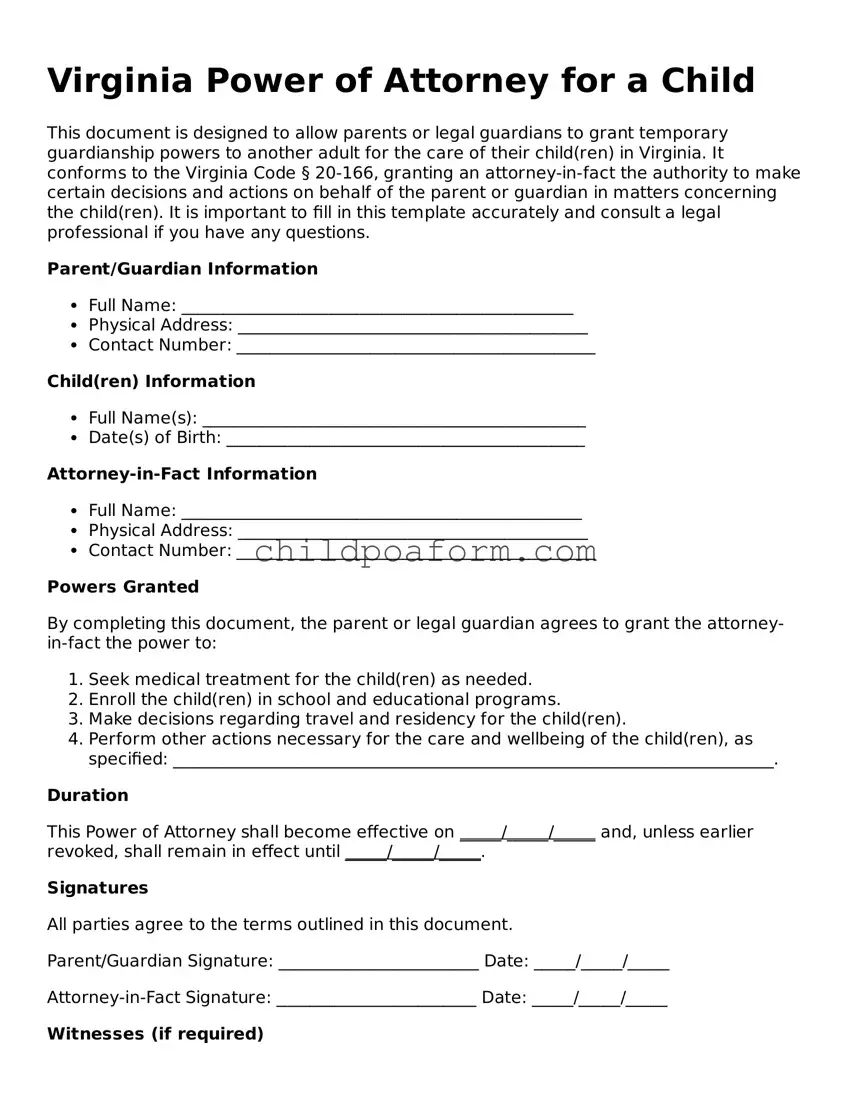Instructions on Utilizing Virginia Power of Attorney for a Child
Filing out the Virginia Power of Attorney for a Child form authorizes an individual to make decisions on behalf of a child, often in the absence or incapacity of the parents. It is a crucial document that can ensure the child's needs are met when the parents are not present to make those decisions. Careful attention to detail is required throughout the process to ensure the form is legally binding and accurately reflects the parents' wishes.
- Start by gathering all necessary information, including the full legal names and addresses of the parent(s), the appointed guardian, and the child or children involved.
- Locate the official Virginia Power of Attorney for a Child form. This can typically be found online on Virginia's state or a legal forms website.
- At the top of the form, fill in the county in Virginia where the form is being executed (signed).
- Enter the date on which the Power of Attorney will become effective.
- In the designated section, write the full legal names of the child or children to whom the Power of Attorney will apply. Include their dates of birth.
- Fill in your full legal name (as the parent or legal guardian) along with your contact information.
- Specify the full legal name and contact information of the person you are granting Power of Attorney to. This person will be responsible for making decisions on behalf of your child or children.
- Clearly outline the powers being granted. This section should specify what decisions the appointed guardian is allowed to make on behalf of the child, including but not limited to educational, medical, and financial decisions.
- Indicate any specific powers that are not being granted, if applicable.
- Specify the duration for which the Power of Attorney is valid. If it is meant to be for a specific period, mention the start and end dates.
- Both the parent(s) or legal guardian(s) and the appointed guardian must sign the form in the presence of a notary public.
- Ensure the form is notarized. This typically involves signing the form in front of a notary, who will then stamp or seal the form, confirming the identities of the signees.
- Keep several copies of the notarized form. Provide a copy to the appointed guardian, keep one for your records, and consider providing copies to relevant entities such as your child’s school or healthcare provider.
Once the form is filled out and notarized, the powers detailed within become effective immediately or on the specified start date. It’s important to review the form periodically and update it as necessary to reflect any changes in guardianship preferences or to extend the duration of the Power of Attorney.
